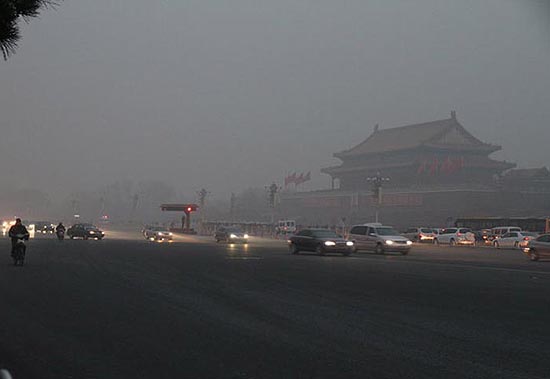Focus on local air quality
- By Murad Qureshi
 0 Comment(s)
0 Comment(s) Print
Print E-mail China Daily, January 14, 2013
E-mail China Daily, January 14, 2013
Over the weekend many parts of northern China experienced serous air pollution. PM2.5 (particulate matter less than 2.5 micrometer in diameter) data in Beijing reached 470 to 490 on Saturday morning, which according to the Air Quality Index is the most polluted air quality. And heavy fog will continue to envelop a large swathe of East and Central China in several days.
China has made progress in combating environmental pollution, but apparently it still has a lot to do to improve its overall air quality.
The Better Air Quality 2012 conference, organized by Clean Air Asia in Hong Kong recently, was hopeful about the effectiveness of mitigating measures rather than people adapting to poor air quality. Soon after the conference, the Chinese government announced new air pollution reduction plan, which is aimed at cutting gas emissions and pollutants and reflects a change in emphasis.
China will cut the PM2.5 intensity by at least 5 percent by 2015 in 13 major areas covering 117 cities, according to a plan issued by the Ministry of Environment Protection. The levels of other pollutants such as PM10 and SO2 (sulfur dioxide) will be reduced by 10 percent while that of NO2 (nitrogen dioxide) will be cut by 7 percent.
China has also vowed to release hourly air pollution data for 74 of its biggest cities from Jan 1 in response to the increasing environmental concern among its citizens. Of late, an increasing number of Chinese people have been complaining against pollution and murky gray skies in cities.
The monitoring will include not only PM2.5, but also SO2, NO2, ozone and carbon monoxide, and data will be collected from 496 monitoring stations.
Microscopic pollutant particles in the air caused the premature death of an estimated 8,600 people in 2012 and an economic loss of about $1 billion in Beijing, Shanghai, Guangzhou and Xi'an, according to a study by Peking University which measured pollutant levels of PM2.5.
Urban residents have become more aware of the benefits of air quality data, which has prompted the Chinese authorities to issue hourly data on air pollution.
Many Chinese cities have removed smoke belching chimneys and coal-burning factories in recent years, but the increase in the number of cars has created new air quality problems. In this respect, electric vehicles (EVs) with their zero-tailpipe emission were seen as the panacea, offering much hope. But the slow progress in EVs' development and affordability seems to have dashed that hope.






